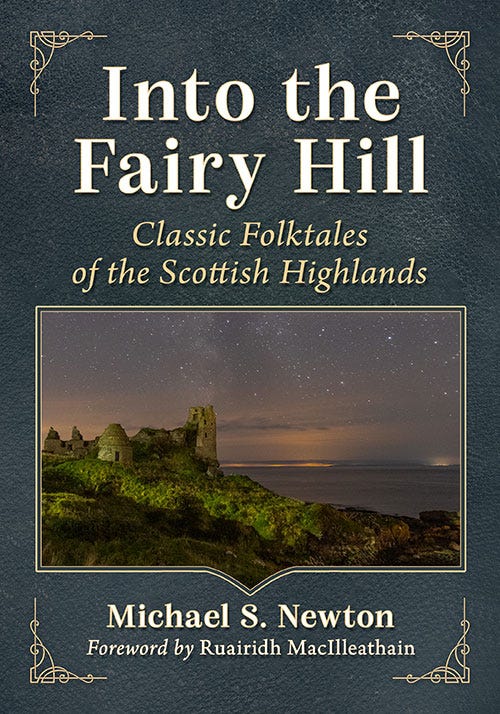The Power of Stories
Gaelic Oral Tradition and Cultural Resiliency
Originally written in in 2021, updated in 2025.
I first attended the Scottish International Storytelling Festival in Edinburgh in 1992, when James MacDonald Reid and Paraig MacNeil were reciting traditional tales from the Highlands. I was truly spellbound by the performance of these two master storytellers and others, and it helped to propel me into my life-long into scholarship into Gaelic oral tradition.
(Image of James MacDonald Reid from Scottish International Storytelling Festival website).
I strongly believe that these traditions are vital in grounding people and communities. I’ve taught my daughter not just to speak Gaelic but to recite traditional tales in Gaelic. It’s very difficult for most people to access good editions of these tales in Gaelic or English translation, so I produced the anthology Into the Fairy Hill (published by McFarland Books in 2022).
I’ve remarked on the importance of Gaelic oral tradition in many previous articles and books, particularly noting its role in transmitting cultural content and aesthetics, in fostering communal cohesion, and in inspiring the imagination to ennoble the minds and lives of people who were described by outsiders as being materially impoverished. (See especially this article analyzing evidence about traditional storytellers in the Highlands.) My observations have been particular informed by the work of Gaelic scholar John Shaw and of cultural anthropologists working at other times and places.
It is delightful when I am able to find contemporary observations that match my own interpolations and intuitions, and I’ve just noticed that in an obscure article published in The Journal of the Ethnological Society of London in 1870, Iain Òg Ìle (aka ‘John Francis Campbell’), a pioneer of Gaelic scholarship, made similar observations in his own distinctive style:
In these distant islands, where men live slowly, and live long, probably because they do not live fast, – in queer rude hovels built of turf and boulders, where men of fourscore years have spent most of their quiet lives, – in these quiet still pools in the current of life, old thoughts accumulate like gold-dust in a Sutherland burn, and there they are preserved.
There on winter nights, children with wondering eyes and mouths agape, sit in the ruddy light of the peat-fire, under the grey canopy of smoke, and listen breathless to these weird old myths. They cease to be ragged, bare-legged lads and lasses, with shock heads of dark or flaxen fair, unkempt and unshorn; they hear how the bold bard fought the dragon, and won the princess and the kingdom, and their spirits are up and doing like him. Potatoes and milk, wooden noggins and good horn-spoons cease to exist; while the golden basin and the giant’s stores are spread before them by the eloquent voice and gesture of some grey wrinkled old man.
And when the story ends, and the fire burns low, and they coil themselves up to rest in their cribs, lads and lasses dream on, and so they dream till they grow up, and grow old, and the old tale becomes a part of their quiet lives. The child’s dream of romance is the bright spot in a dull round of hardship and toil, and the man never forgets it while he lives.
Those who know the inner life of a Highland hut, and the power of association, eloquence, and imagination in Celtic minds, cease to marvel at the abundance of oral tradition which is still preserved at the end of the Aryan journey in the British Isles.
The power of these stories was one of the strengths that helped Gaels to maintain faith in themselves and their identity, and perceive themselves as having cultural treasures worth defending, despite the material conditions of their lives, and in the face of the hostility of anglophones, for many generations.




Where now the ceilidh houses which provided the necessary context in which these stories could be woven into the fabric of their listeners lives?